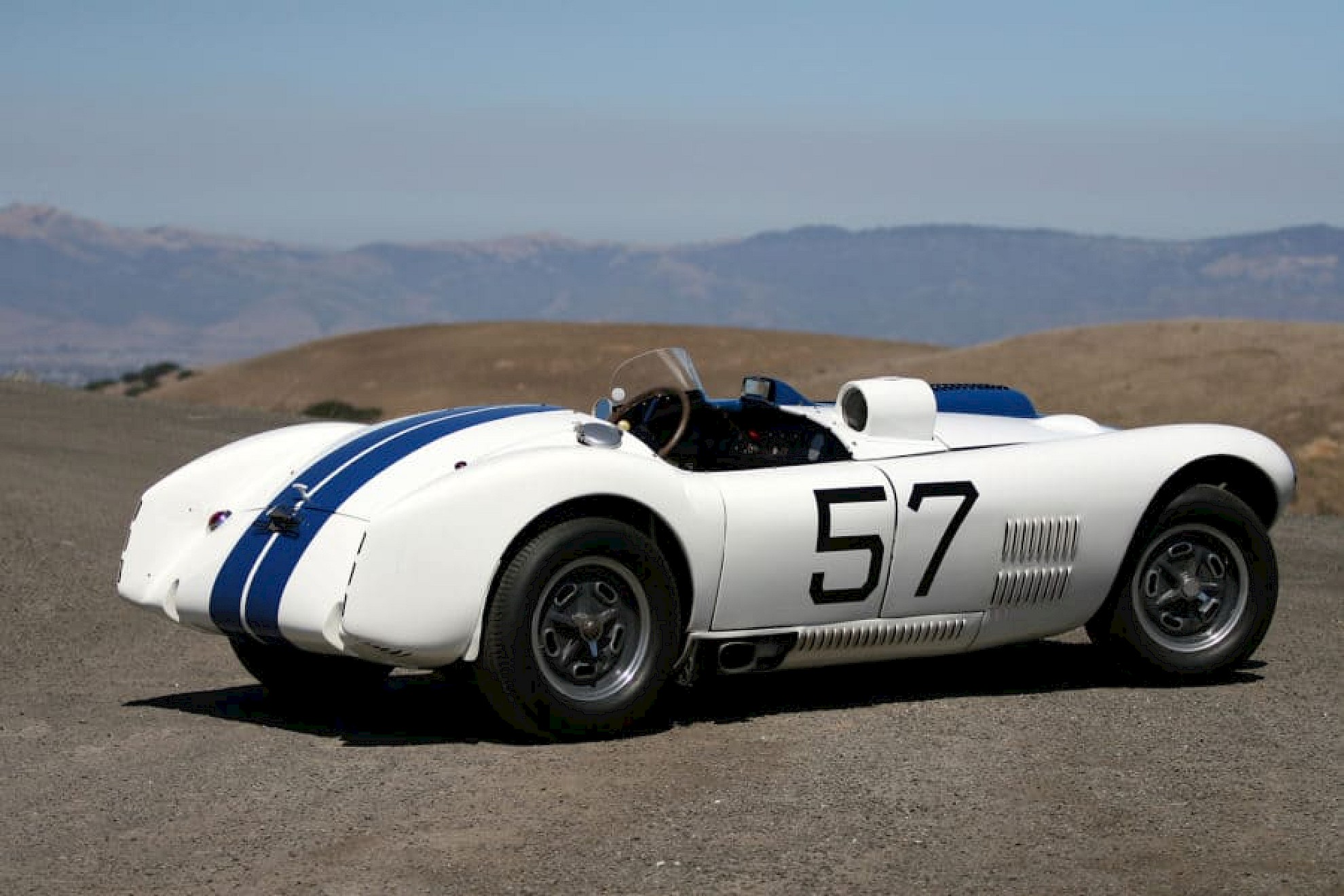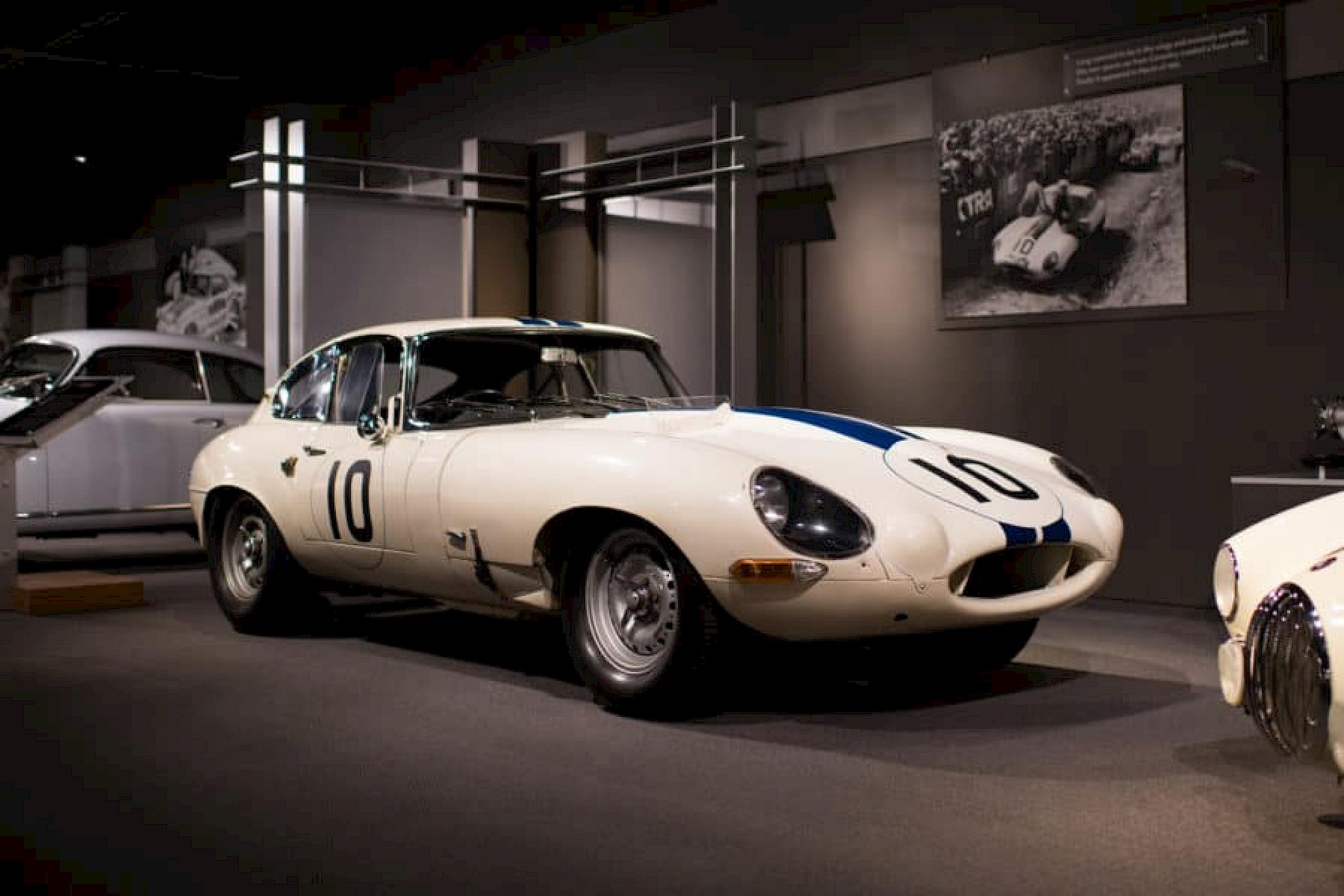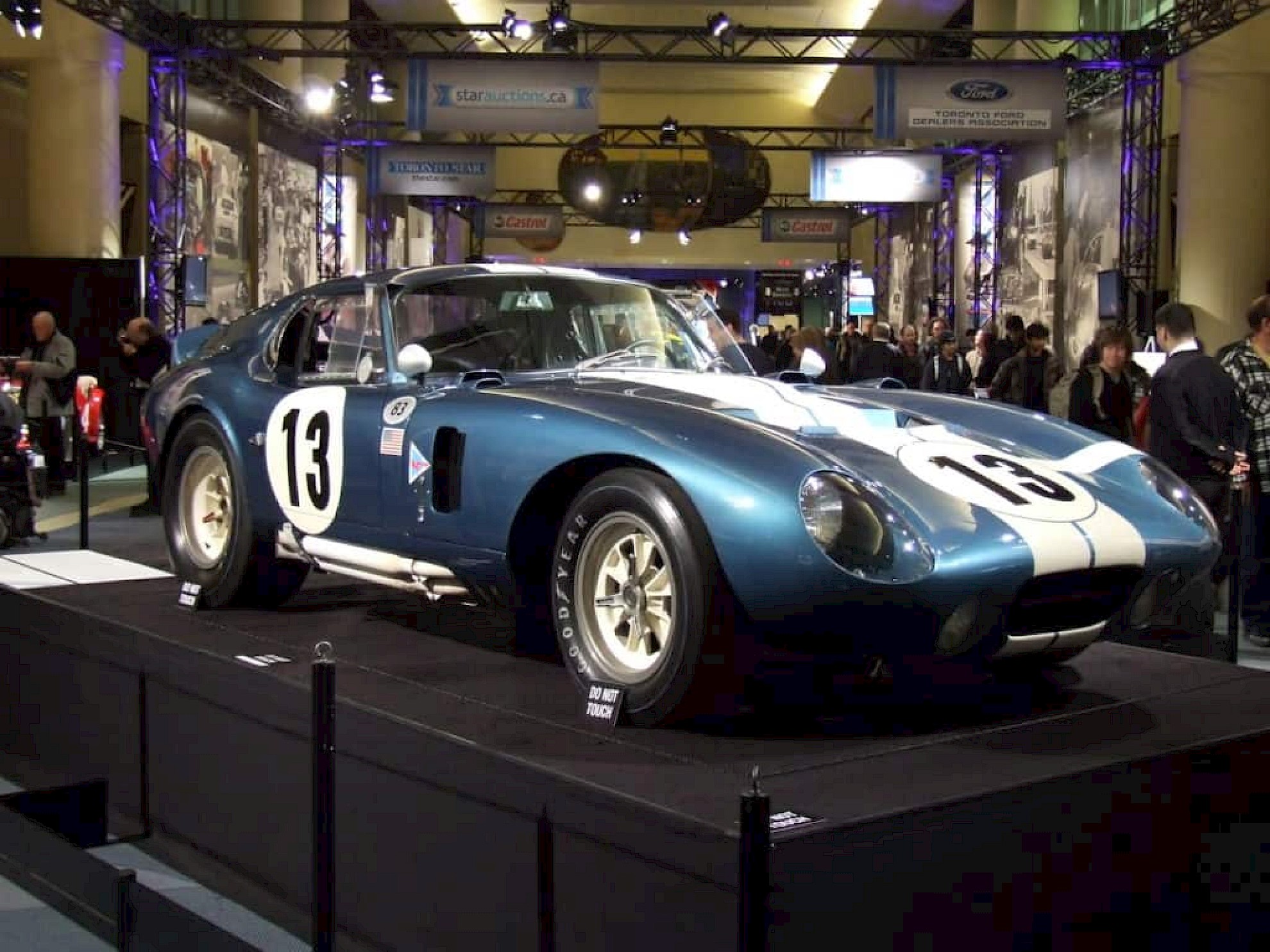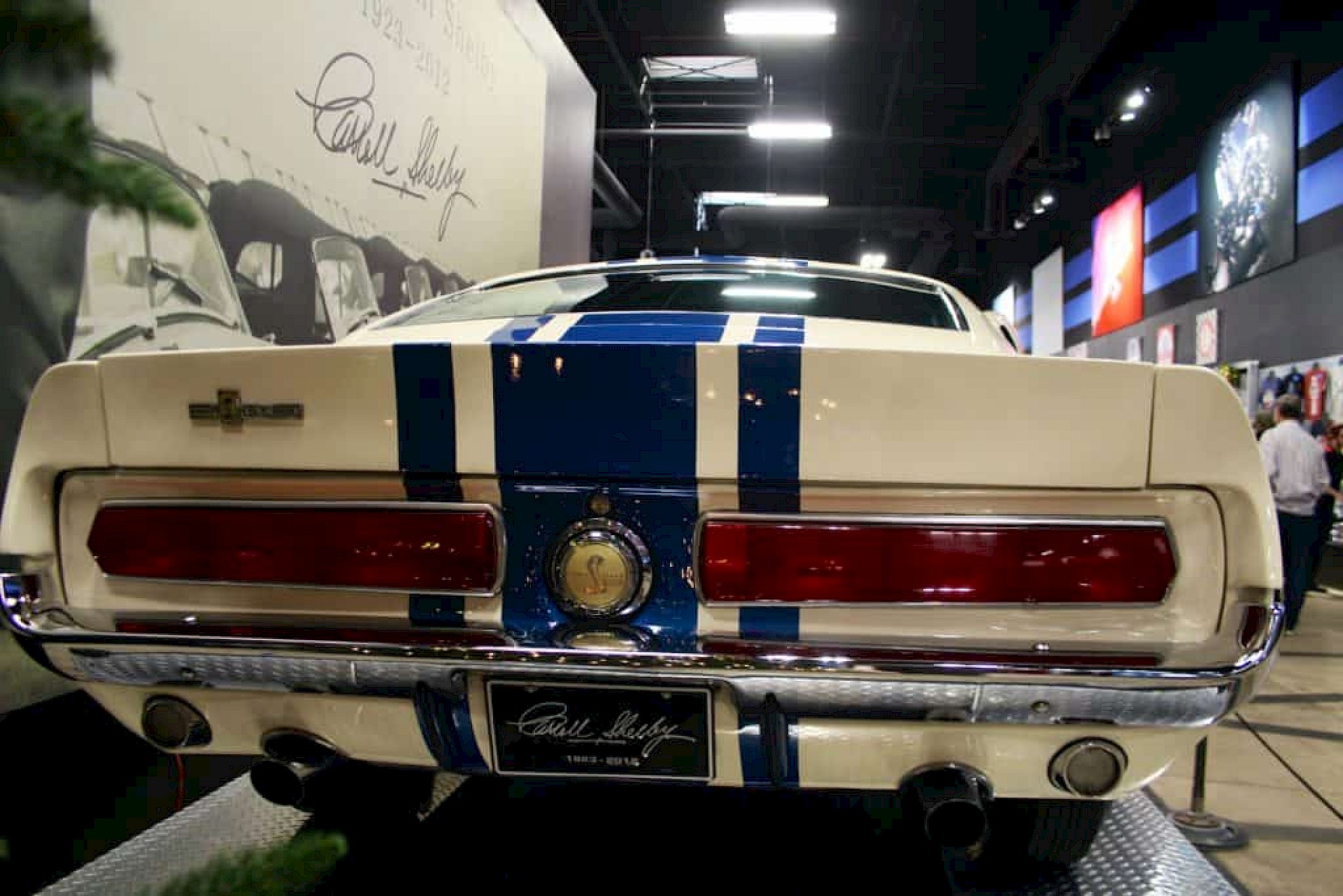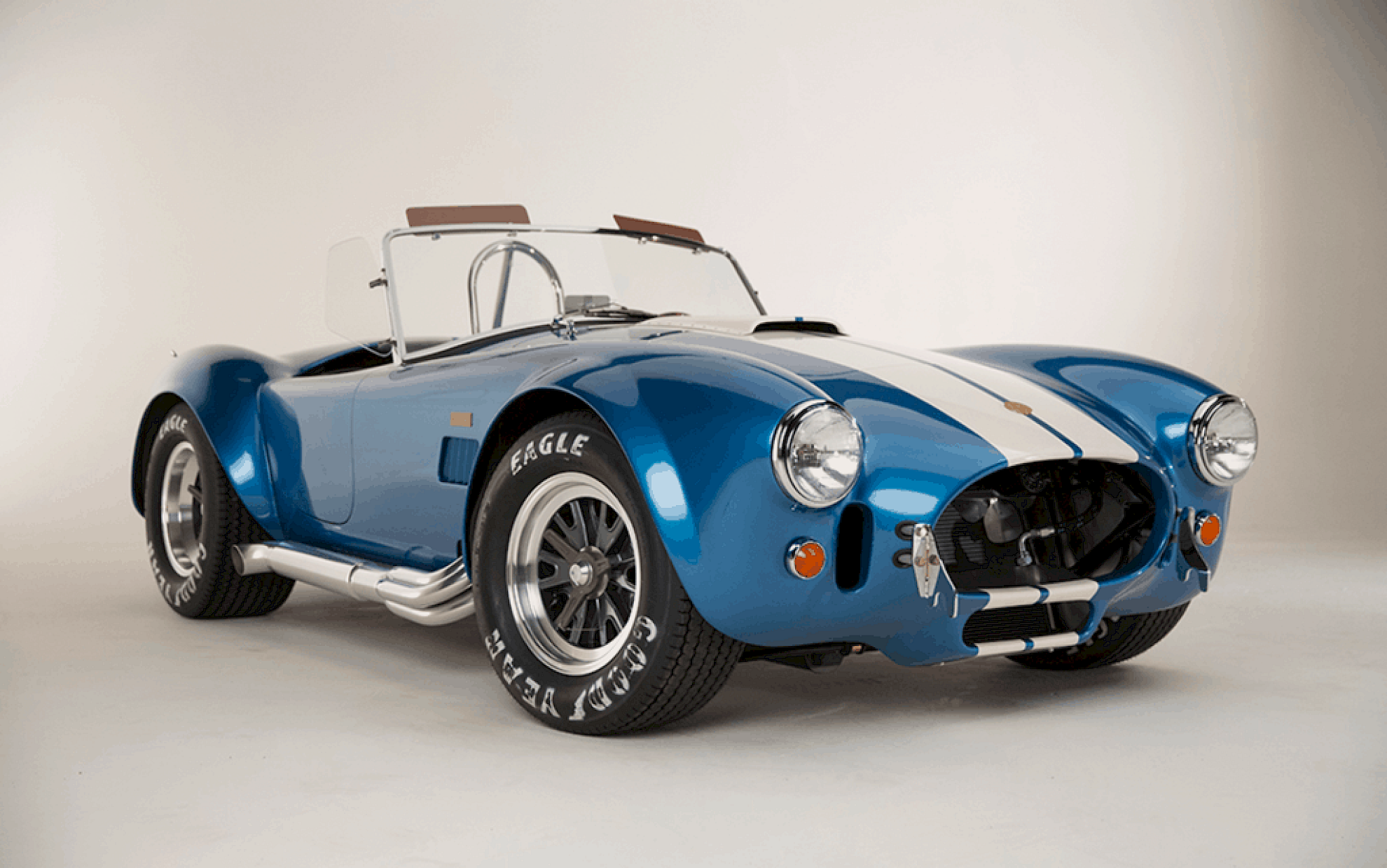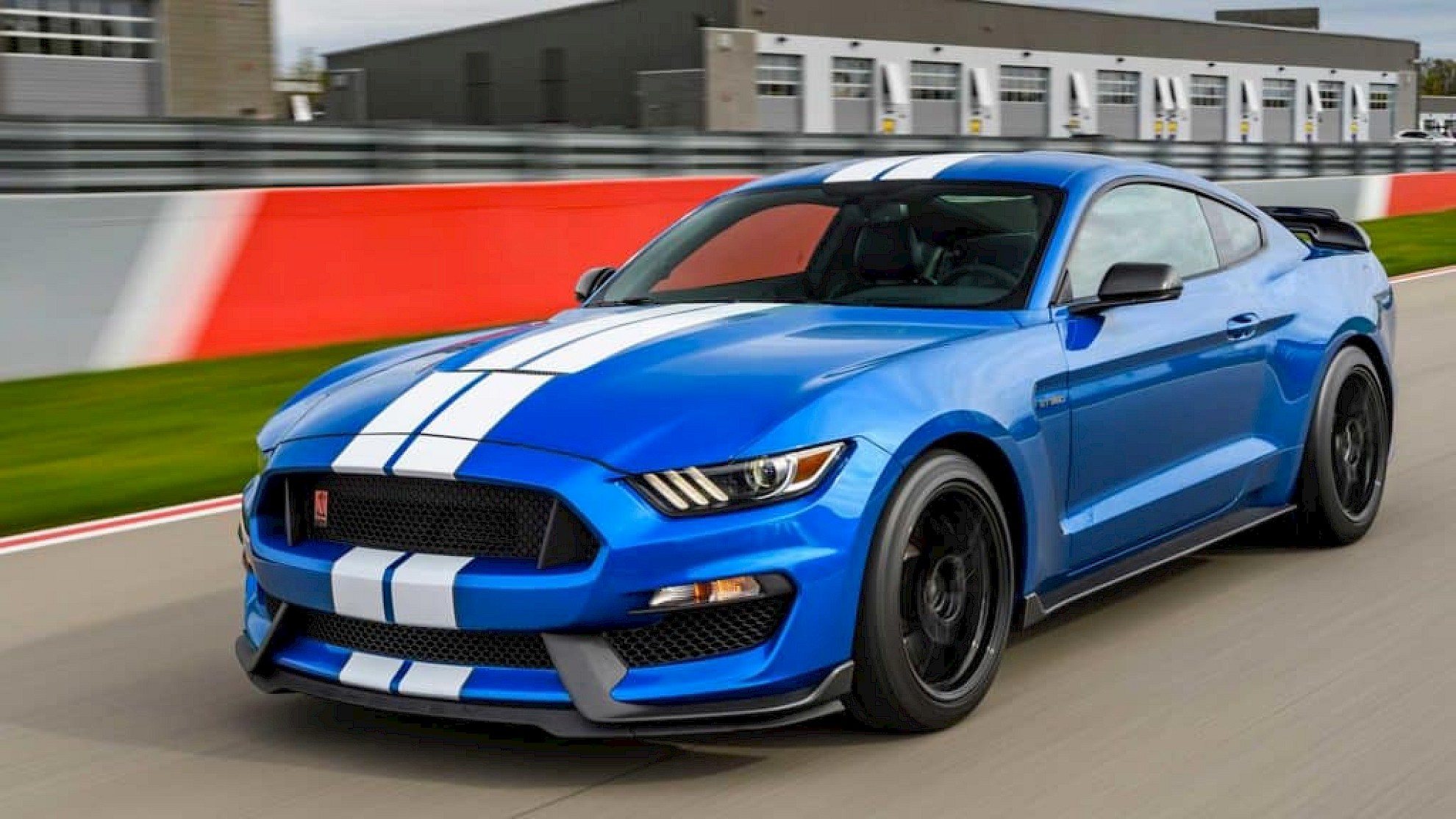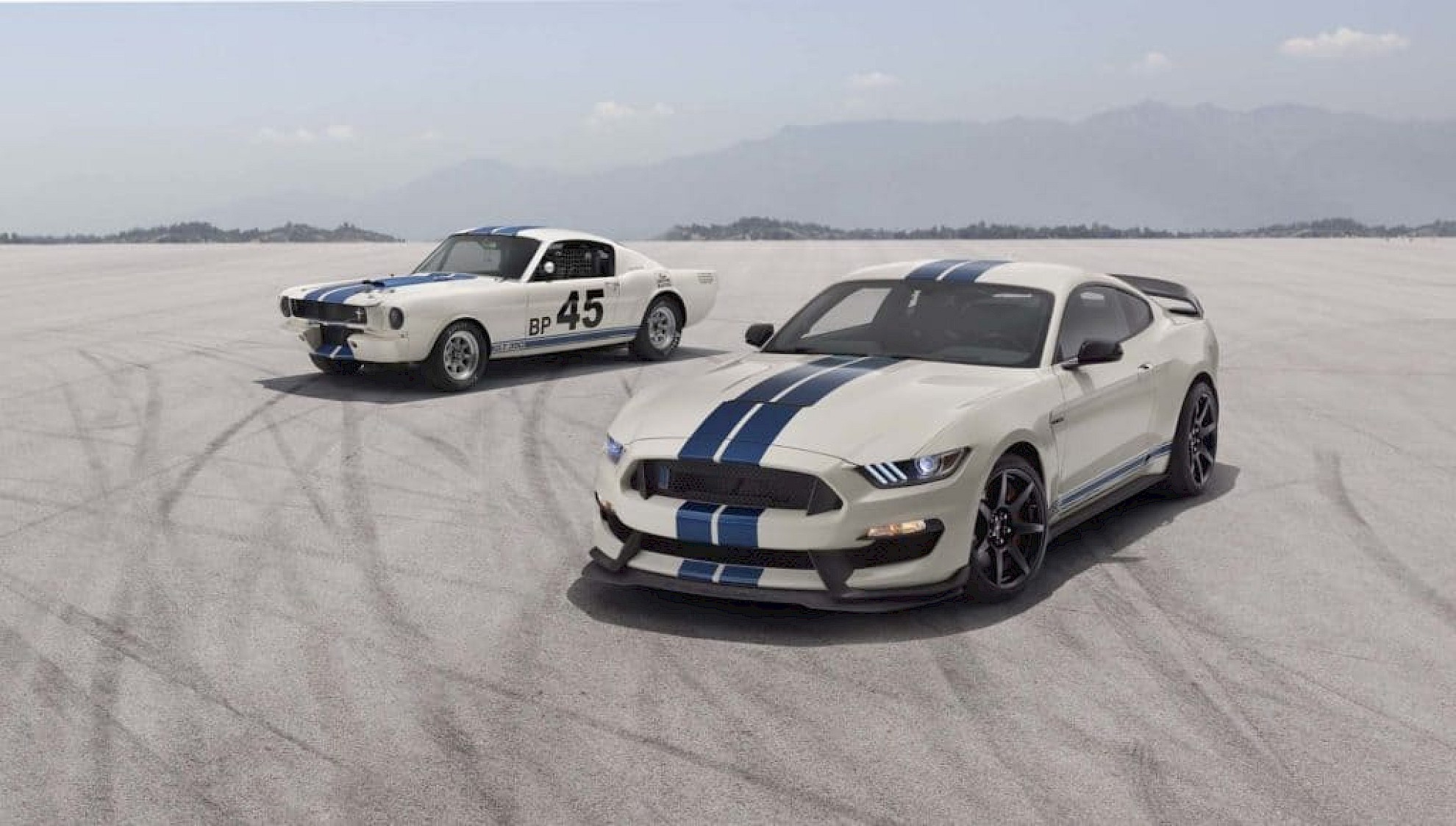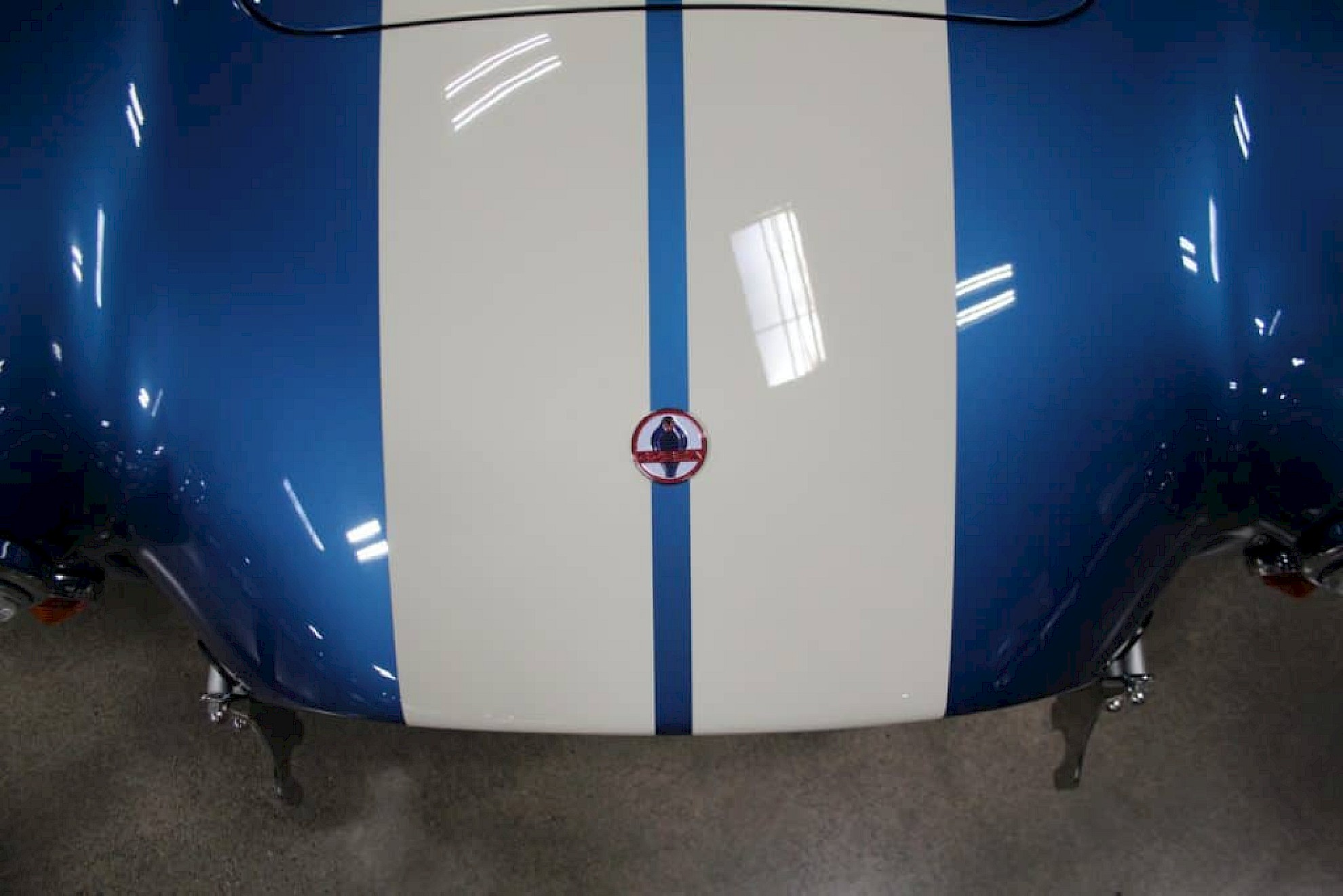How the Cobra got its Stripes
When we first set eyes on the Cobra 427 S/C, we were in love. That’s pretty much how we choose our models. If we love them, we know you’ll love them.
But there’s always a period of questioning that comes after that initial ‘love at first sight’ moment: could we do anything better?
So, our immediate question for the Cobra was: is this the right model? Should we produce the 289, or would the GT Championship-winning Daytona be a better choice. And what colour – Viking Blue or Guardsman Blue. And what about the stripes? Do we prefer it with, or without stripes?
We didn’t have to ponder those questions for very long. The striking colour of the Guardsman Blue, and distinctive Competition model Le Mans stripes won our hearts hands down. Which left us thinking: why do racing cars have particular colours, who assigns them, and where did the distinctive stripes come from?
For FIA competition in the 1950s and 1960s, race teams customarily painted their cars in standardised racing colours. The colour was not determined by the country the car was made in, nor by the nationality of the drivers, but by the nationality of the team entering the vehicle. British teams chose green (hence ‘British Racing Green’) Italian teams chose red, French chose Blue.
Two colours were adopted by American race teams which stuck and also became common outside FIA racing:
White, with blue lengthwise stripes
Blue, with white lengthwise stripes
So whose idea was the stripes?
American millionaire Briggs Swift Cunningham enjoyed a love of auto racing, and in 1940, began a long career of constructing and entering cars of his own design. Briggs pioneered road racing, where drivers tore through public streets and highways, and continued to build his reputation winning races at purpose-built venues and then on private road courses. By the end of 1955, the Cunningham team, although never actually winning, had come third and fifth at Le Mans, carrying the American flag to European sports car racing and had done so with an All-American racing car. Cunningham was instrumental in changing the perception of Americans as ‘hot-rodders’, gaining respect for American teams from Europeans, and creating a style of car that would capture the imagination of the world.
Cunningham’s cars (appropriately called Cunninghams) were painted in American white, but to make them more recognisable at speed, blue stripes were added, running up the hood, over the top and extending down the rear deck. In subsequent years twin stripes were referred to as ‘Cunningham stripes’.
1953 Cunningham C4R – the most successful Cunningham design (photo: supercars.net)
Cunningham Jaguar E-Type (photo: revsinstitute.org)
Meanwhile, Peter Brock, later to become head of all things design at Shelby American, had long been inspired by Briggs Cunningham since his days at high school. As a sports car racing fan, he had followed Cunningham, even painting his own customised 1946 Ford convertible with a pair of blue racing stripes. This colour scheme became his trademark.
Charged with giving Shelby American’s Mustang GT350 a distinctive design and competition appearance, Brock’s solution was to give them the blue and white stripe styling, now referred to as Le Mans stripes. At the same time, the 1964 Daytona Coupes were painted Viking Blue with a pair of narrow white stripes running up the nose, hood and roof.
For the 1965 season, the coupes, FIA roadsters and the 427 Cobra team car were painted Guardsman Blue with white Le Mans stripes. So too were the 1965 Ford GTs, establishing this colour combination as Shelby American’s signature livery.
In 1965, six Daytona’s were assigned to a British team, Alan Mann Racing. Using a selection of top English and American drivers, Mann easily won the World Sportscar Championship for Shelby American, providing Ford with the first World Championship for an American manufacturer. The team’s livery for that year, Guardsman Blue with Wimbledon Stripes is considered by many to be the most iconic look for those cars. It would seem that the ‘racing team colour rule’ was not strictly kept!
1964 Shelby Daytona Cobra Coupe (CSX2299), 2010 Canadian International AutoShow.
There was one exception to the Shelby twin-stripe identity…
In 1967, Carroll Shelby created the GT500 Super Snake. This one-of-one Shelby Supercar was purpose-built for a Goodyear tyre test and was given several distinguishing features:
A GT40 Mk II engine built specifically for this car
Goodyear Thunderbolt whitewall tyres
A unique version of the Le Mans striping – two narrow stripes running either side of a wide centre stripe.
The original 1967 Shelby GT500 Super Snake showing off its unique Le Mans striping
By the 1970s, the FIA abandoned the colour scheme rule as sponsorship liveries became common. However, traditional colours are still used by car manufacturers today as a way of continuing to celebrate their great racing traditions.
Following Shelby’s legendary racing successes, Le Mans stripes have continued to be adopted by manufacturers and owners seeking to represent power and speed for their production sports cars. Even though, sometimes, performance doesn’t always live up to the promise.
Today, the Cobra is regarded by many as one of the most stylish, head-turning sports cars, made legendary by the fearsomely powerful V8 engine that facilitated its World Competition wins. It seems fitting that we should present our 1:8 replica model in its most iconic styling – Guardsman Blue with Wimbledon White Le Mans stripes, representing that irresistible combination of style and performance.
50th Anniversary Shelby Cobra
A 2019 Ford Mustang Shelby GT350 being shown off in the distinctive Shelby livery.
2020 Ford Mustang Shelby GT350 Heritage Edition package
Fascinating Fact about Shelby’s Le Mans Stripes:
The ten-inch stripes are not ten inches along their length. In fact, they taper, from a 9 1/4 ̋ width on the lower front gravel pan to 10 1/2 ̋ at the lower and upper edges of the windshield, 10 3/8 ̋ at the upper edge of the rear window, 10 1/8 ̋ at the lower edge of the rear window, 10 ̋ at the deck lid and 10 ̋ at the lower edge of the rear gravel pan. Painting the stripes a constant ten-inches wide over the entire car produces an optical illusion of the stripes being narrower as they go over the roof of the car and widening out at the front and back.
These factory dimensions were used on all 1965 and 1966 cars striped at Shelby American and the same dimensions were provided to dealers.
There were never any specific Le Mans stripe dimensions used by Shelby American for Cobras. Competition cars which were given stripes had them laid out by whoever painted the car.

